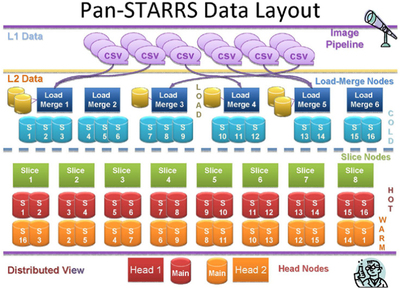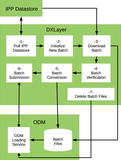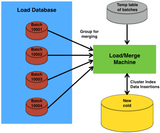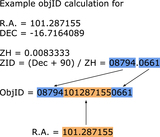Image Details

Caption: Figure 4.
This shows how the data (L1 data/csv files/Image Pipeline) is loaded into L2 data (the load merge machines—responsible for loading the data and merging it into the “cold” part of the database. In this figure, there are eight slice machines that hold hot and warm copies of the database. At the bottom is the head nodes and the main database. The hot database serves the fast response queue, and the warm database serves the slow queue. The fast queue is specifically for queries that take less than one minute to complete. The cold database is never accessible by users.
Copyright and Terms & Conditions
© 2020. The American Astronomical Society. All rights reserved.













